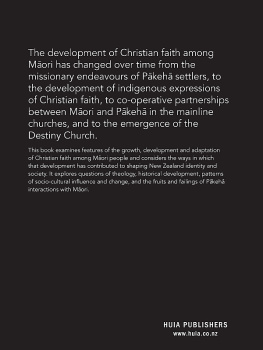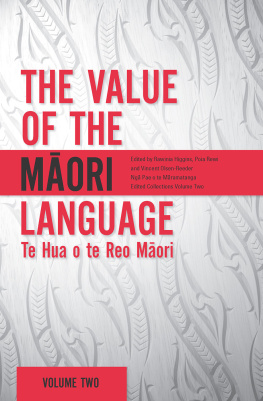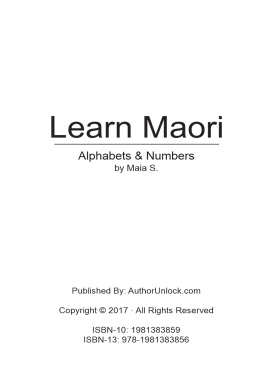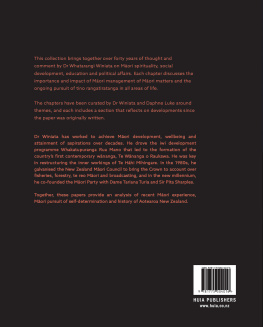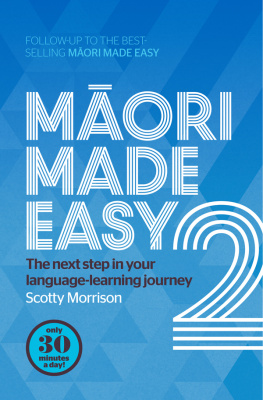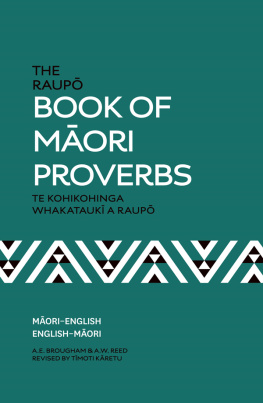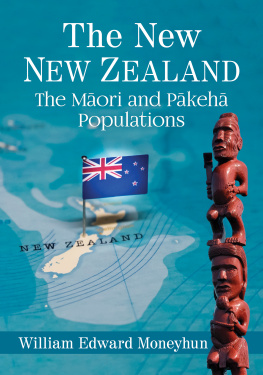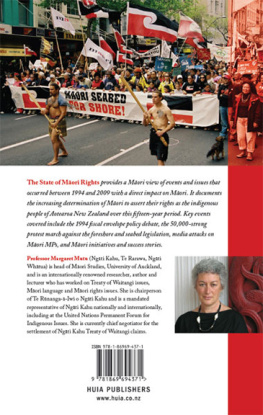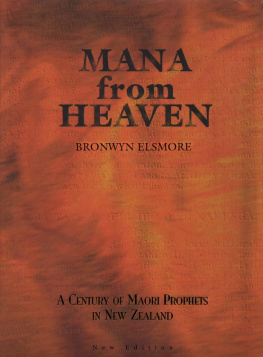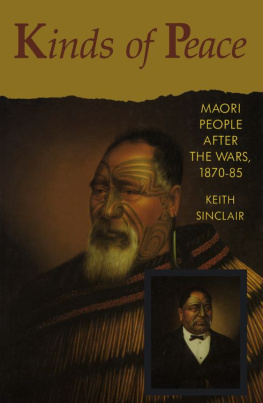First published in 2012 by Huia Publishers
39 Pipitea Street, PO Box 17335
Wellington, Aotearoa New Zealand
www.huia.co.nz
ISBN 978-1-77550-012-4
Copyright the authors 2012
Cover image: CURA photography/Shutterstock Images LLC
This book is copyright. Apart from fair dealing for the purpose of private study, research, criticism or review, as permitted under the Copyright Act, no part may be reproduced by any process without the prior permission of the publisher.
National Library of New Zealand Cataloguing-in-Publication Data
Mana Mori and Christianity / edited by Hugh Morrison [et al.].
Includes bibliographical references and index.
ISBN 978-1-77550-012-4 (print)
ISBN 978-1-77550-068-1 (epub)
ISBN 978-1-77550-069-8 (mobi)
1. Maori (New Zealand people)ReligionHistory. 2. Christianity New ZealandHistory. 3. ChristianitySocial aspectsNew Zealand.
[1. Hhi Karaitiana. reo 2. Hhi Mori. reo 3. Whakapono. reo
4. Krero nehe. reo]
I. Morrison, Hugh Douglas. II. Title.
270.08999442dc 23
Ebook production 2012 by meBooks
Introduction
Murray Rae
One of the persistent challenges for any nation as it develops and forges its identity is to acknowledge as truthfully as it can the reality of its past. This is no easy matter, for history is viewed differently according to the varied perspectives of those who conquered and those who were vanquished, of those who colonised and those who were colonised, of those who suffered injustice and those who were perpetrators of injustice, of those who were pioneers of a new social or political order and those who resisted such change. Even with the best of intentions, a single definitive story of the past is plainly impossible given the limitations of our varied perspectives. It is a sign of maturity in any generation, therefore, to acknowledge its need to attend to multiple voices: the voices of the poor as well as those of the wealthy, the voices of those who pioneered change and of those who suffered its adverse effects, and, in New Zealand, the voices of the tangata whenua (the people of the land) as well as those of tauiwi (the settler peoples). It is likely that more of the truth will emerge as the varied stories of historys cast are heard together and allowed to shape the present generations collective sense of where it has come from and where it should now be heading.
It is in that spirit that the essays of this volume have been gathered together. They deal with a particular strand of our nations history, namely the engagement of Mori with the religion of Christianity brought to our shores with the seal-hunters and whalers, the miners, the settlers and the missionaries. Some who have told the story of Christianity among the tangata whenua regard its impact as mostly destructive.
In 2008 a group of academics at the University of Otago, independently working on a number of related projects, formed a research group called Te Whakapapa o Te Whakapono (Lineages of Faith) to encourage and nurture the telling of those stories. Comprised initially of a theologian and three historians who were attached respectively to the universitys departments of theology and religion, history, education and Mori studies (Te Tumu), the research group added to its membership others from around the country, including clergy, tertiary students and educators in law, education, Mori studies, history, religious studies and theology. One of the first fruits of the research groups work was a symposium held in Dunedin in 2009 at which participants presented a range of papers telling variously of missionary endeavours, of the work among Mori of particular churches, of particular individuals and of Mori reception and adaptation of Christian faith. Many of those presentations have subsequently been developed into the chapters of this volume, and some new papers have been added. The collection offered here is by no means comprehensive. Nor does it attempt any summary assessment. The editors have no pretensions to tell a single definitive story. We seek rather to bring to light just a few tiles in the mosaic of New Zealand history, intending thereby to contribute to a richer understanding of our past.
The contents of the book are presented in two parts. The first comprises a series of studies of the work among Mori of particular denominations or church traditions. There is a strong slant towards recent developments, and particularly toward independent churches whose work among and with Mori has been less well documented but, in the case of the Destiny Church, for example, has assumed a high public profile. Before coming to those more recent developments, however, the volume begins with an account, written by Wayne Te Kaawa, of the early days of Presbyterian mission among Mori. Presbyterianism was established in New Zealand, Te Kaawa argues, as the church of and for the Scottish diaspora. The first Presbyterian minister did not arrive in New Zealand until after the signing of the Treaty of Waitangi and his intent, unlike his Anglican, Methodist and Roman Catholic counterparts, was not to mount a mission to New Zealands native inhabitants but to shepherd the flock of Scottish settlers. Te Kaawa explores the way in which a Presbyterian mission among Mori, focused especially in Te Urewera, developed from those beginnings.
In Harold Hill takes up the story of the Salvation Army and its work among Mori. That story is, Hill contends, a convoluted one that includes both noble endeavour and sad mistakes. Hill explores, with respect to the Salvation Army in particular, a recurrent theme in the history of Christianity in New Zealand, namely, the extent to which the Christian gospel must be disentangled from its European cultural expressions in order to take root among Mori and so find an appropriate Mori expression. The Salvation Army, in common with other branches of the Christian Church in New Zealand, was conflicted over that issue. The annals of New Zealand church history reveal a wide range of views among Pkeh Christians about whether Christian conversion should entail the abandonment of tikanga Mori in favour of a new Christian culture, or whether the Christian faith among Mori could best flourish when adapted to and expressed within a Mori cultural framework.
That theme is apparent in the four following chapters. Robert Joseph confronts the question head on when he asks whether Mormons are Mori, and goes on to explore the doctrinal and historical parallels between Moritanga and Mormonism. Simon Moetara in explores the extent to which the Destiny Church should be regarded as a distinctively Mori religious movement, akin perhaps to Ringat or Rtana. Lineham concludes that the Destiny Church draws upon a broad range of influences, political, cultural and religious, and holds together a number of contradictory elements. The Destiny Church provides a fascinating case study, therefore, of the complex multidirectional workings of cultural adaptation.
While consideration of the work of particular denominations or Christian traditions as a whole is not abandoned, the chapters of Part Two are distinguished by their focus upon the contributions of particular individuals or groups to the development of Christian faith among Mori. Nathan Matthews, in , Hugh Morrison offers a fascinating study of the engagement of children throughout the Presbyterian Church in New Zealand in supporting missionary work among Mori. Of particular interest are the ways in which Mori were portrayed in childrens literature, specifically TheBreak of Day magazine, between 1909 and 1939. Morrisons study may be tightly focused, but it reveals a great deal about prevailing attitudes toward Mori among Pkeh New Zealanders, and about the convoluted story of race relations in this country.

